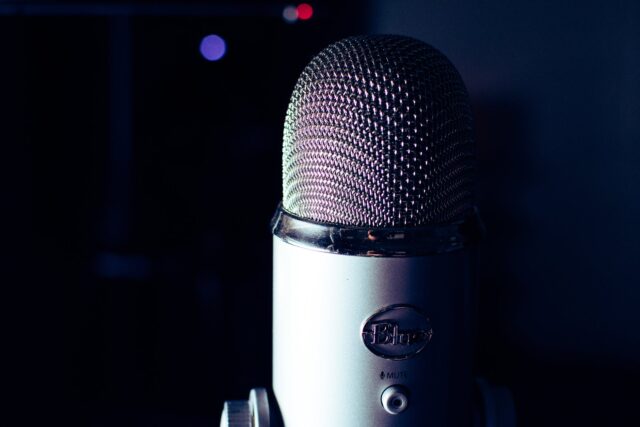
Have you ever needed to convert a voice recording into text? Have you ever asked yourself if this is even possible? Well, to answer that last question, yes it is possible.
Technology is advancing rapidly, with new things being invented every year that better humanity.
But aside from your regular Nobel peace winners for scientific discoveries, some technologies focus on solving menial things such as audio transcribing.
Before this was a thing, we used to transcribe audio manually. You’d put the tape on, get your headphones, and start transcribing. But nowadays, there is software that does it for you.
You see, there are a lot of reasons why we’d need to convert voice recordings into text. Some are because of business purposes, others because of personal reasons.
But the bottom line is that there is a need for it. So, in this article, we are going to help you better understand how to do it using these simple 4 hacks.
Without wasting too much of your time, let’s begin.
1. Using the Internet

You’d be surprised to see the things you can find on the internet. But we aren’t interested in the whole internet, just the World Wide Web. This is also called the surface layer where users can browse websites using services such as Google, Yahoo, Safari, or Bing.
Performing a simple Google or Yahoo search can put you in the right direction of finding a reliable method of converting audio to text.
Because of that, the first method we’ll discuss is using the internet for online software. The companies or individuals that make these online software are numerous and highly competitive amongst each other.
Each prides itself on having the best product, but you cannot know for sure unless you read statements, reviews, or have tried them yourself.
Most of these online tools are pretty straightforward and resemble each other. Most will ask you to insert or upload an audio file and then the converting will slowly start.
This process is very straightforward and very self-explanatory. Some are even capable of real-time audio transcribing that can come really useful in certain situations.
But the biggest problem you’ll face using online tools it the fact that they don’t really have a sense of grammatical correctness. Sure, they might transcribe each word properly without any mistakes, but they rarely hit the mark when it comes to spacing, headers, punctuations, connotations, etc.
These software have free versions and paid versions, so you can certainly try one for free before making the decision of paying them.
2. Transcription Services

Transcription services are amazing and highly accurate as they do this for a living.
These services are an excellent alternative when in need of high-accuracy and a human touch. With that said, there are some pretty terrible services, but this is where we come in.
Transcription services are exactly what they sound to be. They are a service you pay for and in return you get what you’ve come for. They’re mostly very affordable and highly available to the general public.
Some employ hundreds of high-quality transcribers that do an excellent job of getting your audio file in a written format. Some even go as far as to offer you any custom format based on your needs and requirements.
But in most cases, you will be asked to upload a video file and they’ll have it transcribed into text. Once the transcription has been completed, you can judge whether or not they’ve done a good job.
Some offer a try-first-pay-later option for guaranteeing success, while others stick to the usual fee system. Some even offer to do it for free, but that does have its drawbacks.
For more information about a transcription service that will do an excellent job, make sure to visit Transcribear.
3. Converter Technologies

By now you’re mostly confused as to what’s the difference between an online tool, a transcription service, a converter technology, and the rest that we’ll include.
The main difference is the approach each takes, while the similarities are that they all get the job done.
In the case of converter technologies, these are solely AI-based where the computer tries to make sense of the audio and give it back in a text format.
You might find it hard to understand how this is done, but that’s something you shouldn’t really care too much about. What you should care about is finding the right one that will do the job.
And using this option is certainly a viable one. AI learning, or machine learning, is used for tons of things. Some people have chosen to integrate it for the purpose of transcribing audio into text.
This method can either be extremely accurate or fail spectacularly. We’ve seen examples of excellent transcribing with very minor issues, and we’ve seen examples or entire paragraphs being transcribed incorrectly. Ultimately, it falls down as to how good the AI is at what it’s supposed to do.
This method can be hit or miss, so we suggest you do appropriate research on the best one.
4. Using a Mobile App

And probably the least accurate way to transcribe audio to text is using a mobile app.
This isn’t really because a smartphone app is a worse platform to design such a tool, but because there isn’t really a need for it. If you are transcribing an audio file, you’ll mostly be doing it from the comfort of your PC or laptop.
You won’t be using a smartphone for it. But a portable option was always going to be implemented sooner or later. That’s why we’ve decided to include it as a potential hack to solve your problems.
There are some very accurate apps, and there are some absolute monstrosities. Be very careful when downloading these, as they can be an absolute waste of time. The great thing about transcribing apps is that they come with a rating that makes it easier for us to know which are good and which are terrible.
That’s pretty straightforward if you ask us, so always go for the highest-rated one.







